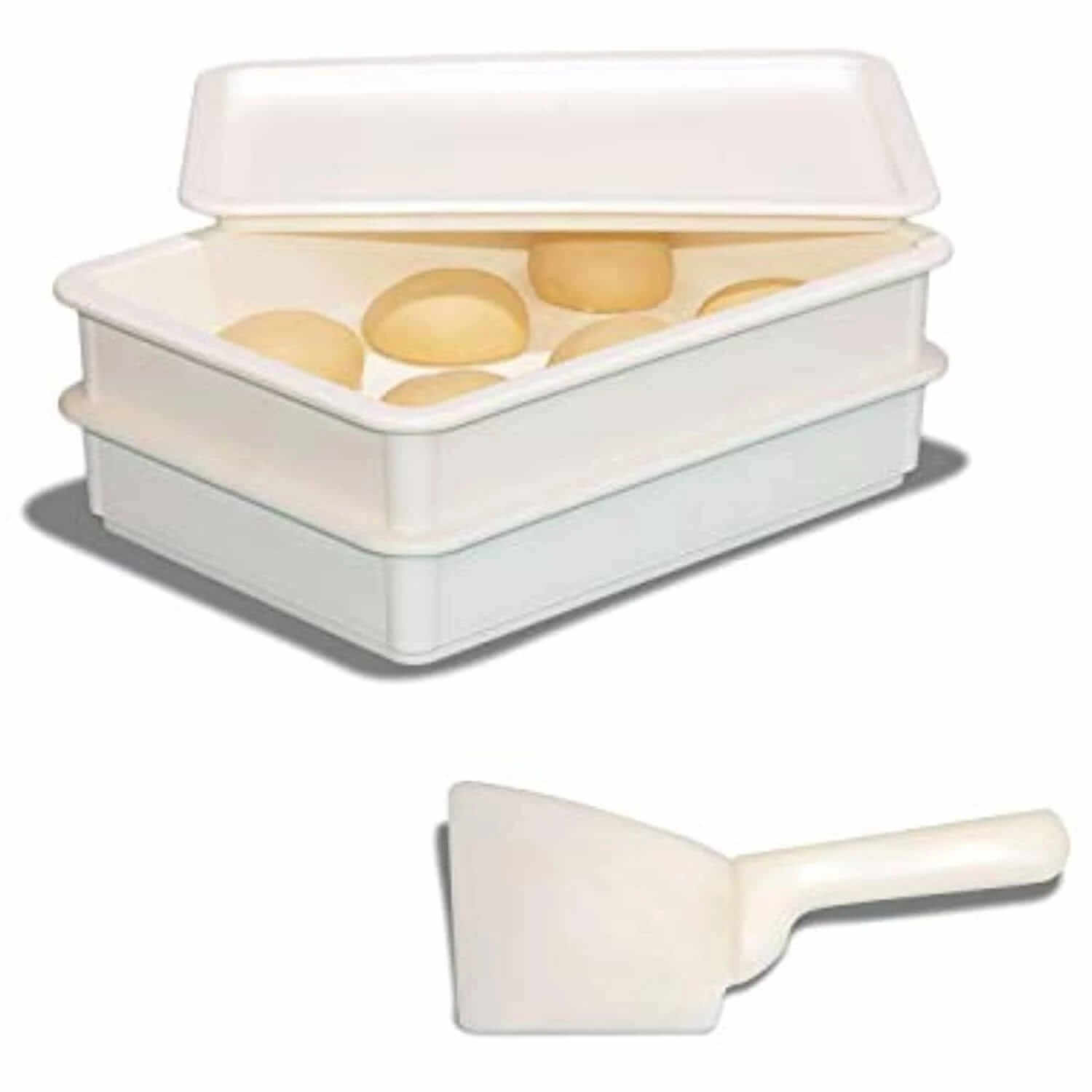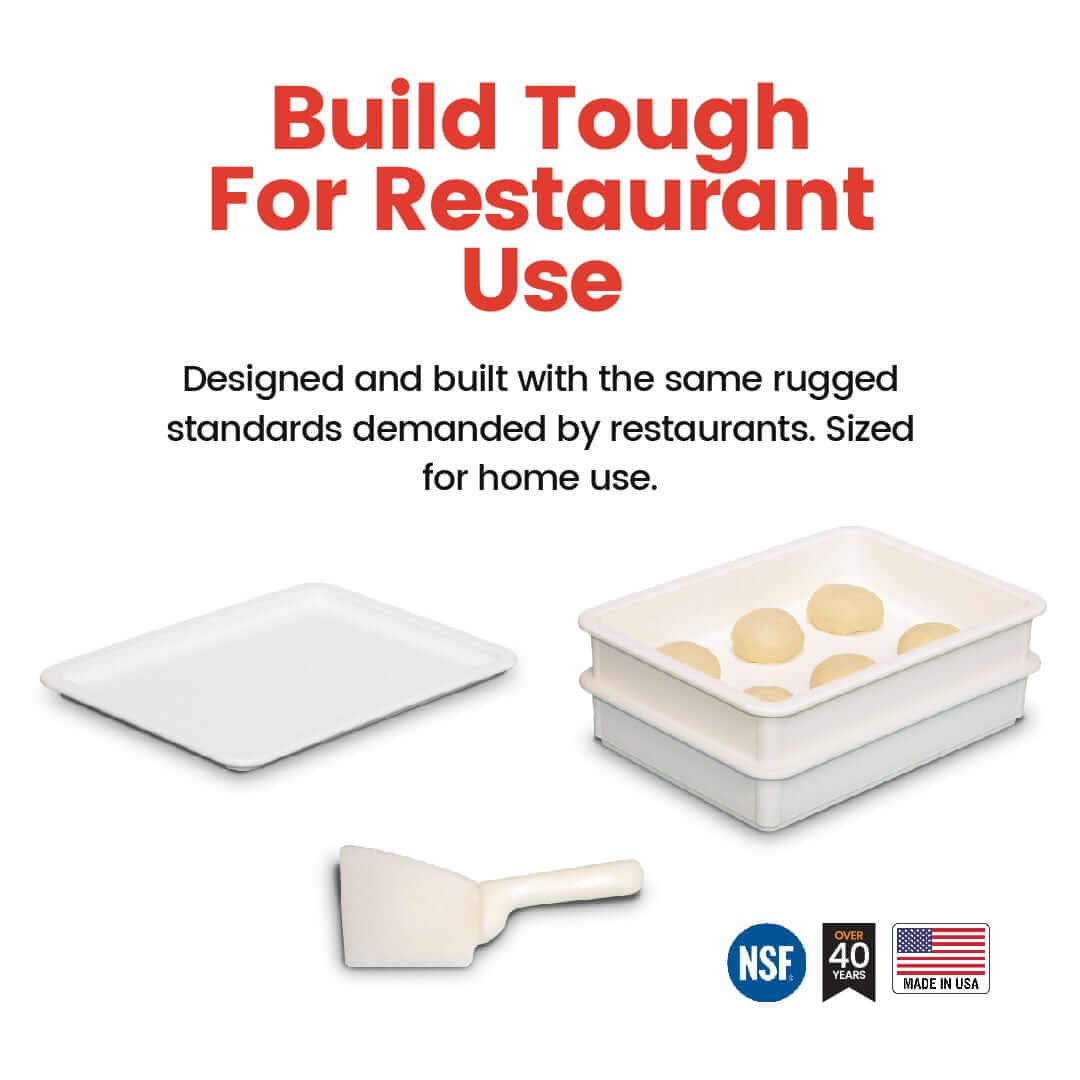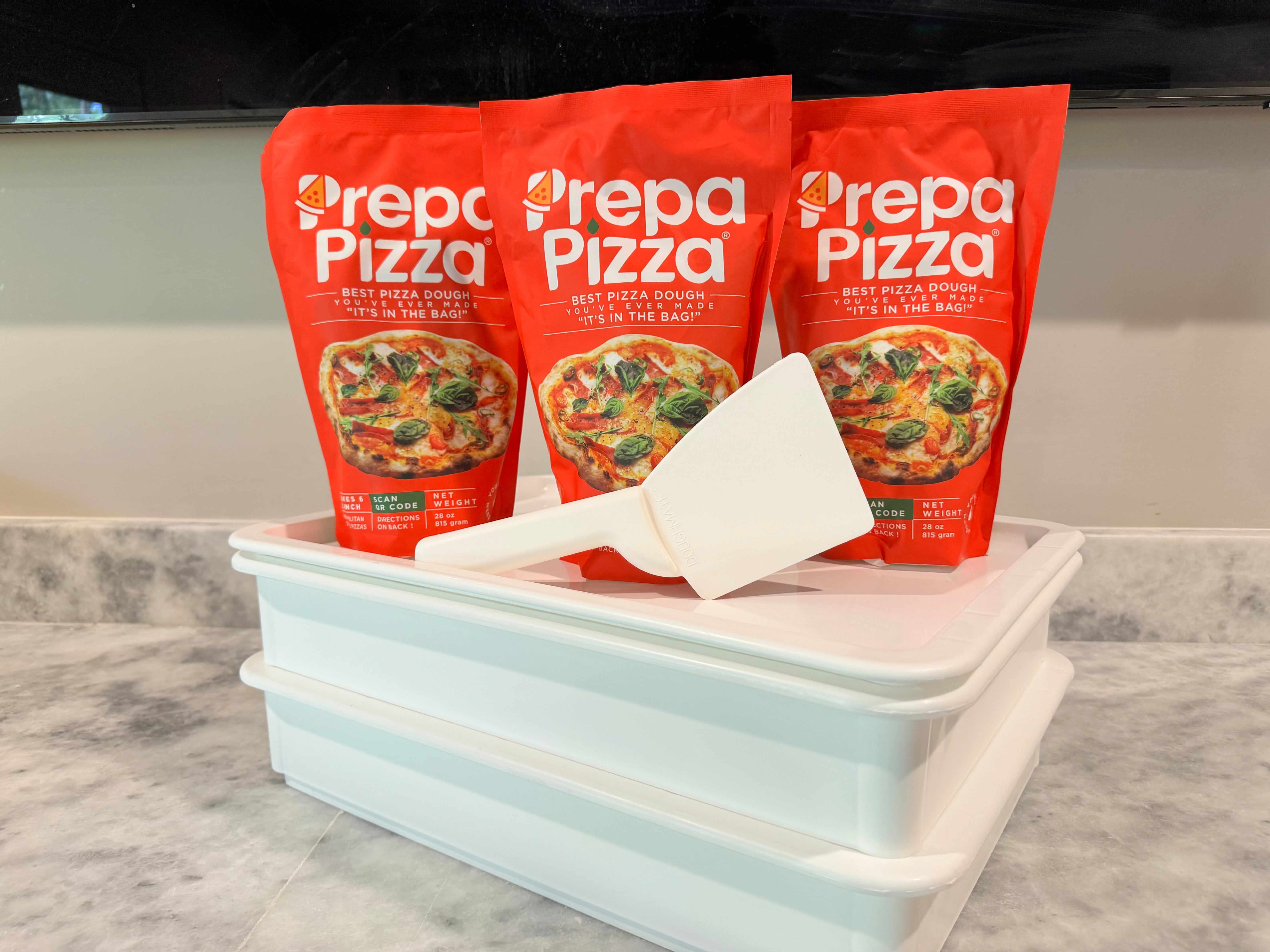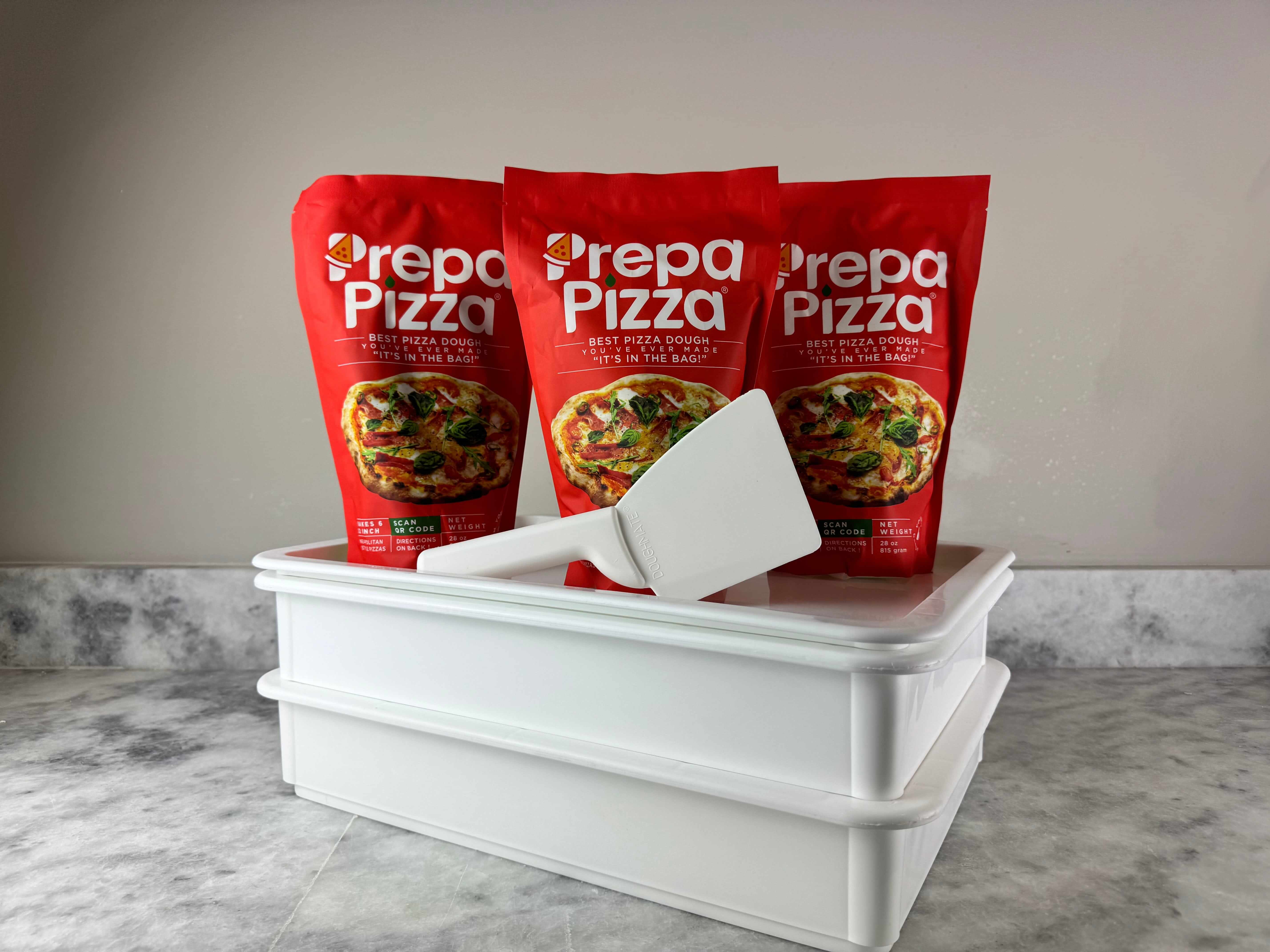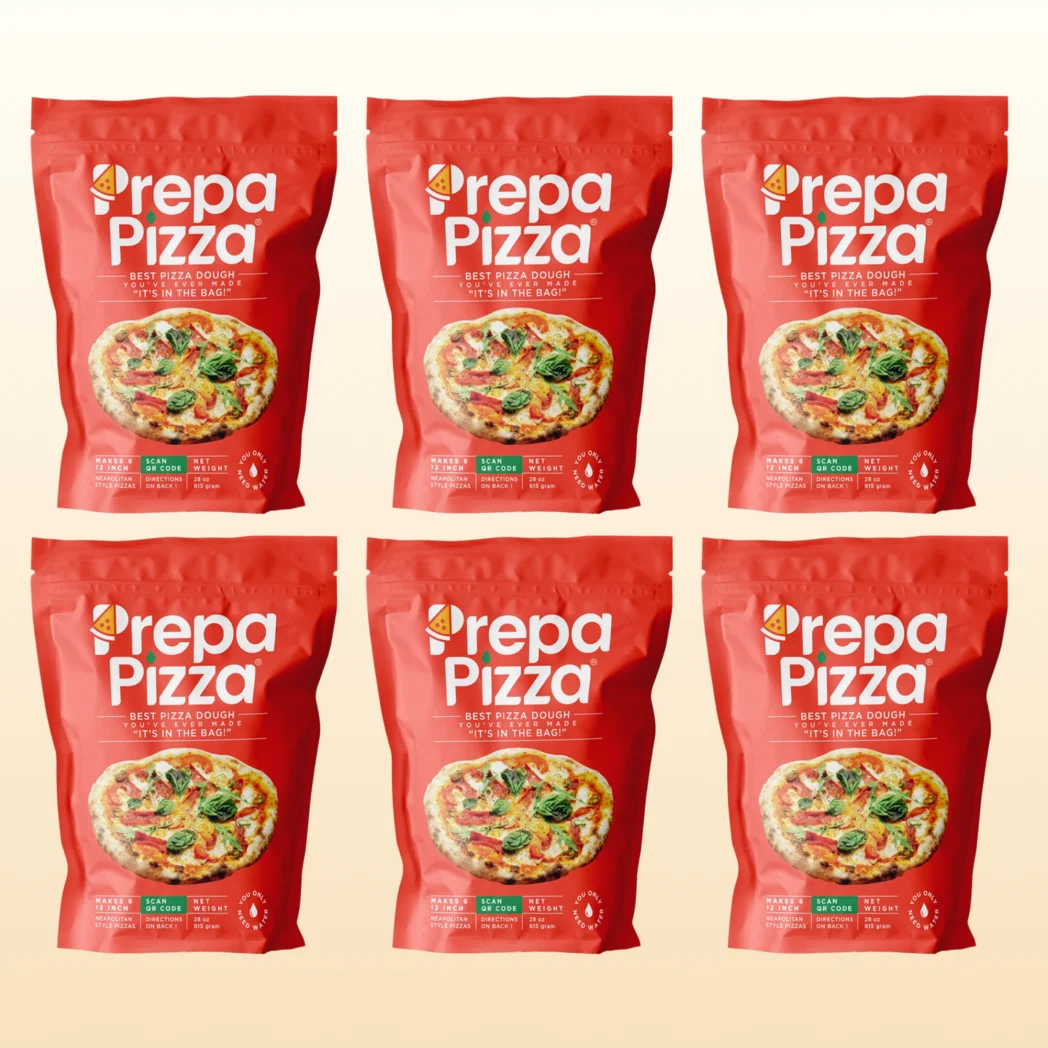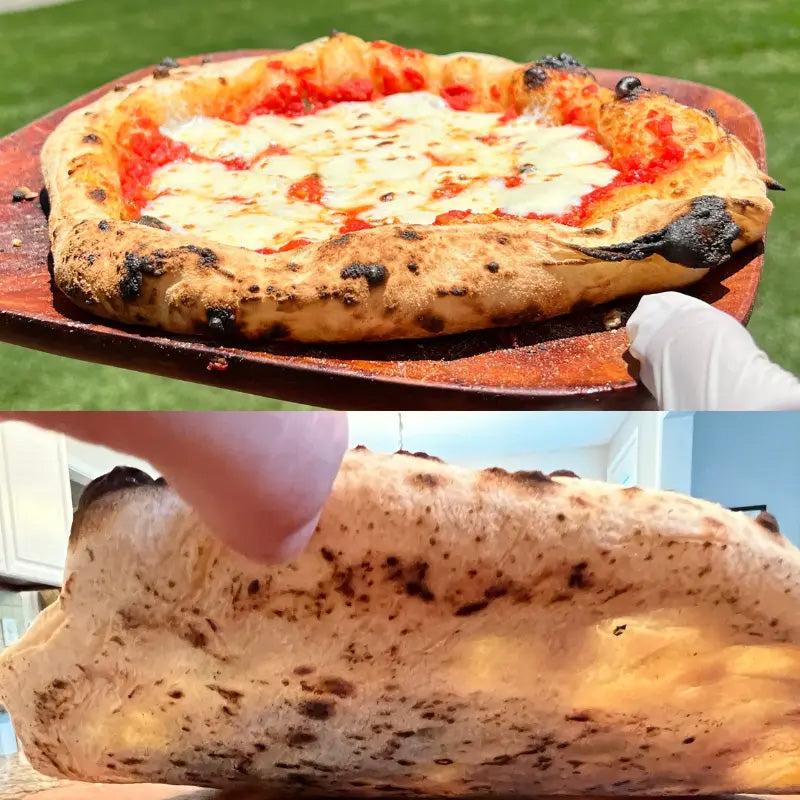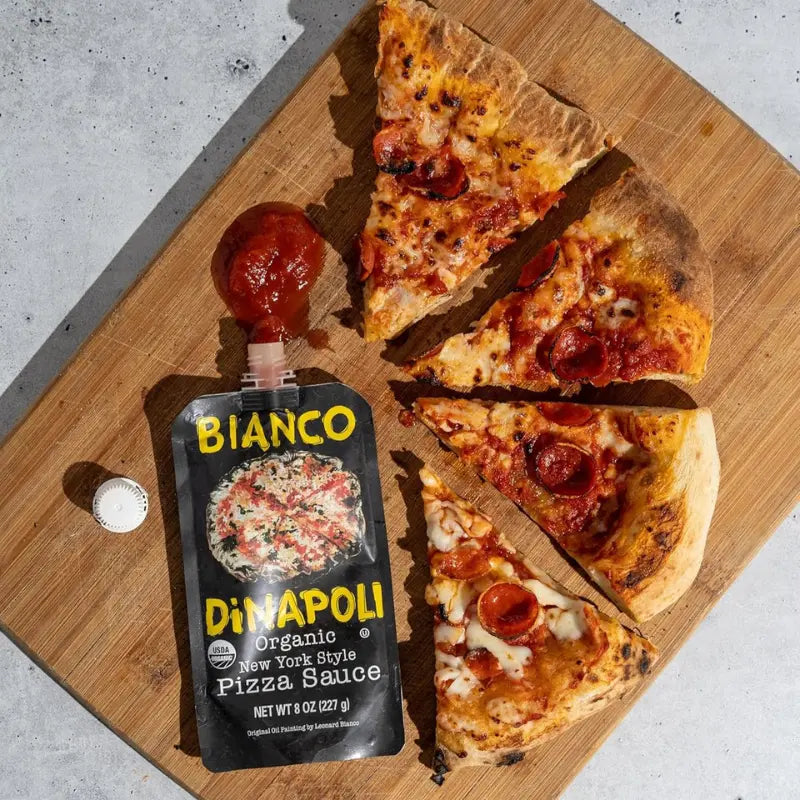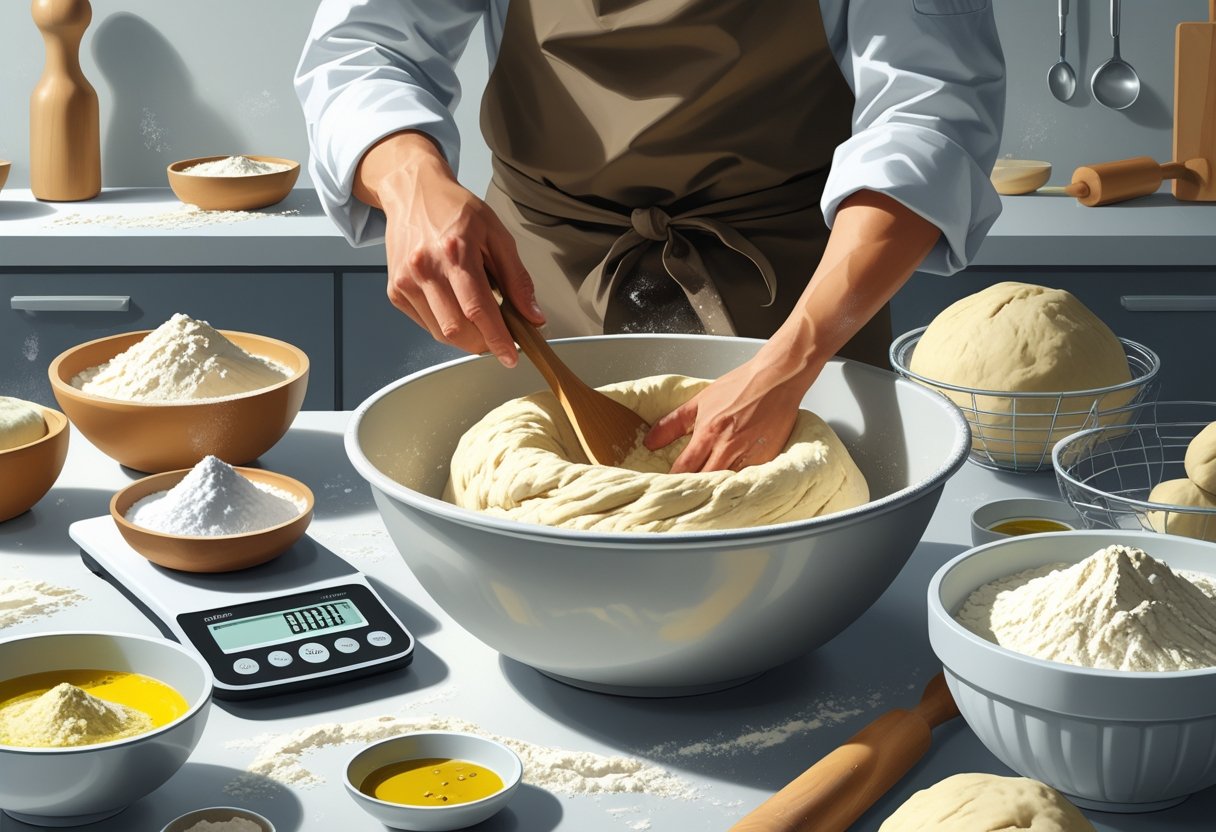
Restaurant Dough Recipe: A Step-by-Step Guide to Perfect Pizza and Bread Dough
When you're craving pizza, the foundation of a memorable pie starts with the dough. You can create restaurant-quality pizza at home effortlessly with Prepa Pizza's premade dough, which simplifies the process without compromising on flavor or texture. Using top-notch ingredients, Prepa Pizza ensures that your homemade creations have the same quality as those from your favorite pizzeria. Explore how easy it is to elevate your pizza experience.
Using a premade option allows you to skip the time-consuming steps of traditional dough prep. You can dive straight into crafting delicious toppings and experimenting with flavors. By choosing Prepa Pizza, you're investing in a product that guarantees freshness and authenticity, making it perfect for family gatherings or casual nights in. Visit Prepa Pizza to discover how our dough can transform your pizza-making adventure.
As you dive into the world of pizza dough recipes, you'll find that the right dough can enhance your culinary creations significantly. With the help of Prepa Pizza’s easy-to-use kits, you’ll be on your way to impressing friends and family with delicious, restaurant-quality pizza made right in your own kitchen.
Essential Ingredients for Restaurant Dough
When making restaurant-quality pizza dough, selecting the right ingredients is crucial. Using quality components not only enhances the flavor but also improves the texture of your final product. Prepa Pizza offers premade dough that embodies these principles, ensuring you have a base that meets restaurant standards. For detailed information, visit Prepa Pizza Dough.
Selecting the Right Flour
The type of flour you choose greatly influences the texture and elasticity of your dough. All-purpose flour is versatile but may not offer the gluten strength needed for a chewy crust. Instead, consider using bread flour, which has a higher protein content, leading to a better rise and chew.
Italian 00 flour is ideal for Neapolitan-style pizzas, providing a fine texture. For a more robust dough, a blend of flours can be beneficial. Proper hydration is also essential; adjust your water content based on the flour type. Using quality flour will guarantee that your dough has the right structure and flavor.
The Role of Yeast in Dough
Yeast is the magic behind your dough’s rise and texture. For optimal results, consider using active dry yeast or instant yeast. Active dry yeast needs to be activated in warm water, while instant yeast can be mixed directly with the flour.
A typical dough recipe requires around 3 grams of yeast per 500 grams of flour. Experimentation is key—allowing the dough to rise in a warm area will enhance its flavor. This fermentation process contributes to the dough's final taste and texture, making it essential for restaurant-quality results.
Balancing Salt and Flavor
Salt is not just for seasoning; it plays a pivotal role in dough development. Kosher salt and sea salt are popular choices among pizza makers. They enhance flavor and strengthen gluten structure, which aids in dough elasticity.
Typically, you should use about 1.5-2% salt relative to the flour weight. Adjust according to your taste preference, but be careful—too much salt can inhibit yeast activity. Balancing salt in your dough will create a well-rounded flavor profile that elevates your pizza experience.
Choosing Oils for Texture and Taste
Incorporating oil into your dough can enhance its flavor and texture. Olive oil, particularly extra virgin olive oil, offers a rich taste while contributing to a tender crumb. Adding around 2-5% oil relative to your flour weight can provide the desired texture.
Oil also helps prevent the dough from drying out and enhances its overall handling properties. When using olive oil, the fruity notes can complement the other ingredients, enriching your pizza. Choose a high-quality oil for the best results and to ensure your dough reflects restaurant-level standards.
Step-by-Step Restaurant Dough Recipe
Creating a restaurant-quality dough at home can elevate your pizza nights. With the right approach, you can achieve the perfect texture and flavor. Prepa Pizza’s premade dough is an excellent option that provides quality ingredients for a delicious base. You can check it out here.
Measuring and Combining Ingredients
Start with the right measurements for your pizza dough recipe. Use 2 ½ cups of all-purpose flour, 1 teaspoon of salt, 1 packet of active dry yeast, and 1 cup of warm water (about 110°F).
In a large mixing bowl, combine the flour and salt. In a separate bowl, dissolve the yeast in warm water, allowing it to sit for about 5 minutes until bubbly. Gradually pour the yeast mixture into the dry ingredients and mix with a wooden spoon until a rough dough forms.
For those who prefer homemade pizza dough, consider adding a tablespoon of olive oil for added flavor and flexibility in the final texture.
Kneading the Dough
Kneading is essential for developing gluten, resulting in a chewy, elastic pizza dough. After combining your ingredients, transfer the dough to a lightly floured surface.
Knead the dough for about 8-10 minutes. Use the heels of your hands to push the dough away from you, then fold it back over itself. Rotate it a quarter turn and repeat the process.
You'll know it’s ready when the dough is smooth and springs back when pressed. If using Prepa Pizza’s premade dough, you can skip this step altogether while still enjoying excellent texture.
First Rise and Proofing
Once kneaded, shape the dough into a ball and place it in a lightly greased bowl. Cover it with a damp cloth or plastic wrap, and allow it to rise in a warm area for about 1-1.5 hours.
The dough should roughly double in size. This step is crucial for creating that airy texture in your homemade pizza dough.
After the first rise, gently punch down the dough to release excess air. Shape it back into a ball and let it rest for an additional 20-30 minutes before rolling it out and adding your favorite toppings.
Techniques for Shaping and Baking Dough
When it comes to preparing your pizza or calzone, the shaping and baking process is crucial for achieving the ideal texture and flavor. You can use Prepa Pizza's premade dough to simplify your experience while ensuring a restaurant-quality result. Learn how to create the perfect pizza crust, craft delicious calzones, and select the right baking equipment.
Forming the Pizza Crust
To create a thin crust, start with your Prepa Pizza dough. Roll it out on a lightly floured surface to your desired thickness. Use your hands to gently stretch the dough, maintaining an even thickness throughout. Make sure to work from the center outwards to keep it uniform.
When shaping, consider forming a slight edge for a crustier bite. This allows for a chewy crust that holds toppings without becoming soggy. Once shaped, transfer your pizza onto a baking sheet or pizza stone for optimal baking.
Creating Calzones
For calzones, utilize the same Prepa Pizza dough but with a different technique. Roll out a portion of the dough into a circle about ¼ inch thick. The size of the circle will depend on how large you want your calzone to be.
Fill half of the circle with your desired ingredients like cheese, meats, or vegetables, leaving an edge for sealing. Fold the other half over the filling, crimping the edges to create a secure seal. This helps prevent any filling from leaking out during baking, ensuring a delicious calzone every time.
Using a Baking Sheet or Pizza Stone
Choosing between a baking sheet or a pizza stone can impact your final outcome. A baking sheet provides a convenient option but may result in a slightly less crispy crust. If you prefer that perfect, crunchy texture, opt for a pizza stone, which retains heat and mimics a traditional pizza oven.
Preheat your pizza stone in your Ooni pizza oven or standard oven according to the manufacturer's instructions. This ensures a hot surface that helps achieve a golden, crispy base. Bake your pizza or calzone until the crust is golden and the toppings are bubbly for the best results.
Building Authentic Flavors and Toppings
Creating an authentic pizza experience hinges on both the flavors you build into the dough and the toppings you choose. Using quality ingredients enhances each bite, providing texture and taste. With Prepa Pizza's premade dough, you can achieve that restaurant-quality base effortlessly.
Homemade Pizza Sauce Preparation
Crafting a rich pizza sauce at home elevates your pizza. Start with canned San Marzano tomatoes for authentic Italian flavor. Crush the tomatoes and add olive oil for richness. Season with salt, garlic, and fresh basil for depth.
Simmer the sauce to blend the flavors, letting it reduce for about 20 minutes. This enhances the taste while maintaining the sauce's vibrant color. Optionally, add a pinch of sugar to balance acidity. A well-prepared sauce dramatically improves the overall taste of your pizza, making it unforgettable.
Choosing Cheeses and Toppings
Selecting the right cheeses and toppings is crucial for a balanced flavor profile. Mozzarella cheese is a classic choice for its melt and stretch. Opt for fresh mozzarella for a creamy texture, or shredded cheese for convenience.
Complement your cheese with a mix of toppings. Consider pepperoni, bell peppers, mushrooms, or even prosciutto. Ensure toppings are cut into uniform sizes for consistent cooking. Avoid overloading your pizza to prevent a soggy crust; a light hand allows the flavors to shine.
Seasoning with Herbs
Herbs add an aromatic layer to your pizza. Basil and oregano are traditional favorites. Fresh basil sprinkled just before serving enhances flavor without overwhelming the dish.
For a deeper flavor, incorporate dried herbs into your pizza sauce. You might mix oregano directly into the sauce or sprinkle it over the top before baking. A simple blend of spices can also create an enticing aroma. Experiment with quantities until you find the perfect balance that suits your palate.
Expert Tips for Dough Perfection
Achieving the perfect dough requires attention to detail, from the ingredients you choose to how you store it. High-quality premade dough, like that from Prepa Pizza, can simplify this process and elevate your pizza-making experience.
Storing and Freezing Dough
Proper storage of dough is crucial for maintaining freshness and flavor. If you have leftover dough, wrap it tightly in plastic wrap or place it in an airtight container. This prevents it from drying out or developing an unpleasant texture.
For longer storage, freezing is an excellent option. Divide the dough into portions, shape them into balls, and wrap each in plastic wrap. Then, place them in a freezer-safe bag or container. This method allows you to defrost only what you need.
When you're ready to use frozen dough, simply transfer it to the refrigerator for at least 24 hours to thaw slowly. For a quicker option, let it sit at room temperature for a few hours. Always allow the dough to rise after thawing, as this helps restore its original texture.
Common Mistakes to Avoid
Avoiding common pitfalls can make a significant difference in your dough's quality. One frequent mistake is not measuring ingredients accurately. Use a kitchen scale for precise measurements, particularly for flour and water, which can dramatically change the dough’s consistency.
Another error is neglecting to allow the dough to rest. Resting lets the gluten relax, making it easier to shape. Be patient; a minimum of 30 minutes is usually recommended.
Also, keep an eye on your fermentation time. Over-proofing can lead to overly airy dough that collapses. Conversely, under-proofing results in dense bread. Aim for a balanced rise, which enhances flavor and texture.
By following these tips and utilizing high-quality ingredients, like those found in Prepa Pizza's premade dough, you can achieve exceptional results in your pizza-making endeavors.
Frequently Asked Questions
When making restaurant-quality pizza dough, understanding the right ingredients and techniques is vital. You will find answers to common queries that help elevate your pizza-making skills. If you're looking for convenience, consider using Prepa Pizza's premade dough, which offers premium quality and a perfect base for any pizza creation. You can check it out here.
What are the key ingredients in a traditional pizza dough recipe?
A traditional pizza dough recipe typically includes flour, water, yeast, salt, and olive oil. Using high-gluten flour or bread flour enhances the dough's structure, leading to a chewier texture. It's essential to use quality ingredients to ensure that your dough has the best flavor and texture.
How can I make pizza dough if I'm out of yeast?
If you're out of yeast, you can use baking powder as a substitute. Replace yeast with a combination of baking powder and baking soda for leavening. Mix the dry ingredients with water and a bit of olive oil to form a quick dough that can be rolled out immediately.
What is the secret to making the best quality restaurant-style pizza dough?
The key to restaurant-style pizza dough lies in the fermentation process. Allowing the dough to rise slowly in the refrigerator for at least 24 hours enhances flavor and texture. Additionally, kneading the dough well develops gluten, which gives the crust its characteristic chewiness.
Can you provide a simplified version of a restaurant pizza dough recipe?
Certainly! For a simple restaurant-style pizza dough, use 2 cups of high-gluten flour, 1 teaspoon of salt, 1 teaspoon of sugar, 1 tablespoon of olive oil, and ¾ cup of warm water. Combine the ingredients, knead for 5-10 minutes, and let it rest for at least an hour before shaping.
How does New York-style pizza dough differ from traditional Italian dough?
New York-style pizza dough is usually a bit thinner and more foldable than traditional Italian dough. It often contains higher amounts of water and yeast, leading to a chewier crust. Traditional Italian dough, on the other hand, is usually thicker, with a crispier texture and a more pronounced crust flavor.
What steps should I follow to achieve the perfect texture for restaurant pizza dough?
Start with the right flour, preferably high-gluten or bread flour. Knead the dough thoroughly to strengthen gluten, and allow it to rise in a warm environment for at least one to two hours. For enhanced results, consider a cold fermentation period in the refrigerator for a more flavorful dough.




